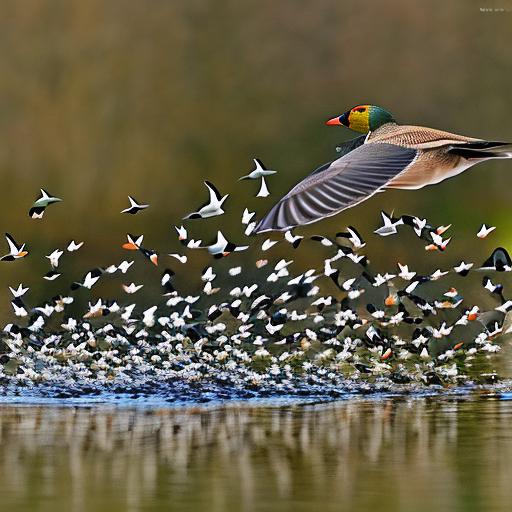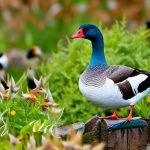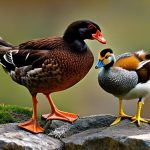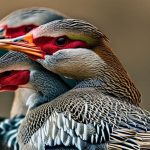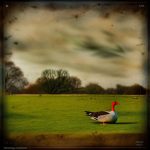Geese can be a nuisance and cause damage to property, as well as pose health risks. They are known to leave droppings on lawns, golf courses, and other open spaces, which can be unsightly and difficult to clean up. In addition, their droppings can contain bacteria that can contaminate water sources and pose a risk to human health. To address these issues, many property owners turn to decoys as a humane and effective way to deter geese.
Key Takeaways
- Decoys are an effective way to keep geese away from unwanted areas.
- Understanding geese behavior and migration patterns is important for choosing the right decoy.
- There are different types of decoys available for geese deterrence.
- Proper placement of decoys is crucial for maximum effectiveness.
- Regular maintenance and care of decoys is necessary for longevity.
Understanding Geese Behavior and Migration Patterns
Geese are social animals that migrate in flocks. They are attracted to open spaces with water and food sources, making parks, golf courses, and residential areas prime locations for them to settle. Geese are also known to return to the same areas year after year, as they have a strong homing instinct. Understanding their behavior and migration patterns is crucial in effectively deterring them.
Types of Decoys for Geese Deterrence
There are several types of decoys available for geese deterrence. Silhouette decoys are flat cutouts that resemble the shape of a goose when viewed from a distance. They are lightweight and easy to transport, making them a popular choice for hunters and property owners alike.
Full-body decoys are three-dimensional replicas of geese that provide a more realistic appearance. They are typically made of durable materials such as plastic or foam and can withstand various weather conditions.
Motion decoys are designed to mimic the movement of real geese. They often have spinning wings or bobbing heads that create the illusion of geese feeding or landing. These decoys can be highly effective in attracting and deterring geese.
Sound decoys emit recorded goose calls or distress sounds to scare away geese. They can be used in conjunction with other types of decoys to create a more realistic and intimidating environment for geese.
Choosing the Right Decoy for Your Geese Problem
When choosing a decoy for geese deterrence, it is important to consider the size of the area and the number of geese present. For larger areas with a high population of geese, full-body decoys or motion decoys may be more effective in creating a realistic scene. Silhouette decoys can be used in smaller areas or as supplemental decoys to enhance the overall effect.
It is also important to determine the type of decoy that will be most effective in your specific situation. If geese are primarily attracted to water sources, motion decoys that mimic feeding or landing behavior may be the best choice. If geese are causing damage to lawns or golf courses, full-body decoys placed strategically throughout the area may be more effective.
Placement of Decoys for Maximum Effectiveness
Proper placement of decoys is crucial in maximizing their effectiveness. Decoys should be placed in areas where geese are likely to land or feed, such as near water sources or open fields. It is also important to vary the placement and number of decoys to create a realistic scene that will deter geese.
For example, if using full-body decoys, they should be spaced out in a way that resembles a flock of geese. Placing them too close together can make them appear unnatural and may not effectively deter geese. Additionally, it is recommended to move the decoys periodically to prevent geese from becoming accustomed to their presence.
Maintenance and Care of Decoys for Longevity
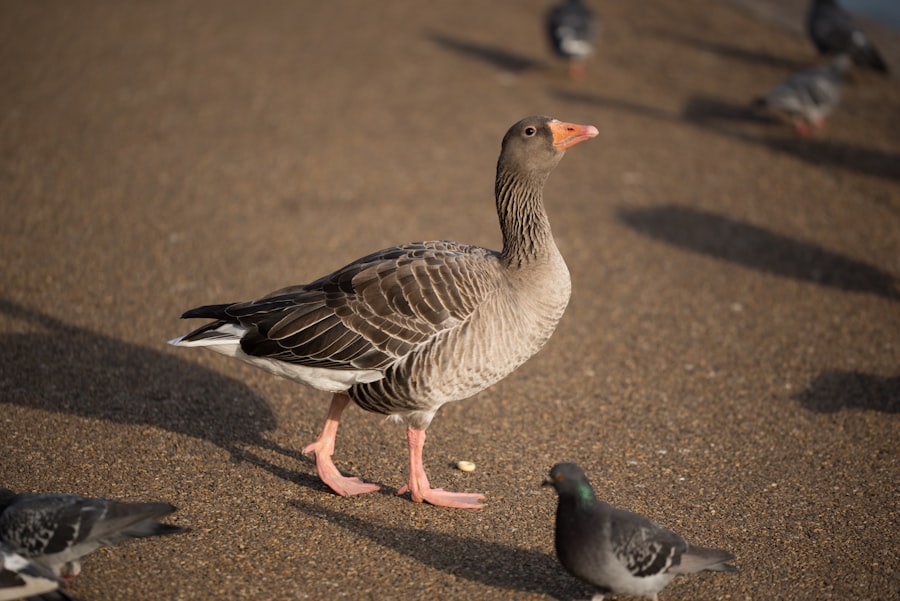
To ensure the longevity of your decoys, it is important to clean and store them properly. Decoys should be cleaned regularly to remove dirt, debris, and any droppings that may accumulate on them. This can be done with mild soap and water or a gentle cleaning solution specifically designed for decoys.
After cleaning, decoys should be thoroughly dried before storing them. Storing them in a cool, dry place will help prevent damage from moisture or extreme temperatures. It is also important to inspect decoys regularly for any signs of damage or wear and replace them as needed.
Other Methods to Supplement Decoys for Geese Deterrence
While decoys can be an effective tool for geese deterrence, they may not be enough on their own in some situations. Supplemental methods can be used to further discourage geese from landing or settling in certain areas.
Landscaping can be used to create an environment that is less attractive to geese. Planting tall grasses or shrubs near water sources can make it more difficult for geese to access these areas. Additionally, installing rocks or gravel around the perimeter of ponds or lakes can make it less appealing for geese to land.
Fencing or netting can also be used to block geese from certain areas. This can be particularly effective in protecting lawns or gardens from damage. However, it is important to ensure that the fencing or netting is properly installed and maintained to prevent geese from finding alternative entry points.
Benefits of Using Decoys for Geese Control
There are several benefits to using decoys for geese control. Firstly, decoys provide a humane and non-lethal method of deterrence. They do not harm the geese but instead create an environment that is less attractive to them.
Secondly, decoys are cost-effective compared to other methods of geese control. They can be purchased at a relatively low cost and can be reused year after year with proper maintenance and care.
Lastly, decoys can be used in a variety of settings, from residential properties to commercial areas such as golf courses or parks. They are versatile and can be customized to suit the specific needs of each location.
Potential Drawbacks and Limitations of Decoys for Geese Deterrence
While decoys can be effective in deterring geese, there are some potential drawbacks and limitations to consider. Geese may become accustomed to the presence of decoys over time, especially if they are not moved or varied in placement. This can reduce their effectiveness in deterring geese.
Additionally, decoys may not be effective in all situations. Some geese may be more persistent or less deterred by decoys, especially if they have become habituated to human presence. In these cases, supplemental methods such as landscaping or fencing may be necessary to further discourage geese.
Effective Geese Deterrence with Decoys
Decoys are a valuable tool for deterring geese and can be an effective solution for property owners looking to address geese-related issues. By understanding geese behavior and migration patterns, choosing the right type of decoy, and properly placing and maintaining them, property owners can maximize their effectiveness in deterring geese.
While decoys may not be a foolproof solution in all situations, they offer a humane and cost-effective method of geese control that can be used in a variety of settings. By supplementing decoys with other methods such as landscaping or fencing, property owners can further discourage geese from settling in unwanted areas. With proper planning and implementation, decoys can provide an effective solution for geese deterrence.
If you’re looking for effective ways to keep geese away, you might also be interested in learning about the benefits of using decoys. Decoys can be a great tool for deterring geese from your property and preventing them from causing damage. In fact, a recent article on Poultry Wizard discusses the different types of decoys available and how they can be used to effectively keep geese at bay. To find out more about this topic, check out the article here.
FAQs
What is a decoy?
A decoy is an object that is used to attract or distract animals, especially birds, for hunting or other purposes.
What are geese?
Geese are waterfowl birds that belong to the family Anatidae. They are known for their distinctive honking sound and their V-shaped flying formation.
Why do geese need to be kept away?
Geese can cause damage to crops, lawns, and golf courses. They can also be a nuisance in public areas such as parks and beaches, where their droppings can create health hazards.
What types of decoys are effective in keeping geese away?
Decoys that resemble predators such as coyotes, foxes, and dogs are effective in keeping geese away. Decoys that move or make noise are also effective.
How do decoys work in keeping geese away?
Decoys work by creating the illusion of a predator in the area, which scares the geese away. Geese are naturally wary of predators and will avoid areas where they sense danger.
Where should decoys be placed to be effective?
Decoys should be placed in areas where geese are likely to congregate, such as near bodies of water or open fields. They should be placed in a visible location and moved periodically to maintain their effectiveness.
Are there any other methods for keeping geese away?
Other methods for keeping geese away include using repellents, installing barriers such as fences or netting, and modifying the environment to make it less attractive to geese. These methods may be used in combination with decoys for maximum effectiveness.
Meet Walter, the feathered-friend fanatic of Florida! Nestled in the sunshine state, Walter struts through life with his feathered companions, clucking his way to happiness. With a coop that’s fancier than a five-star hotel, he’s the Don Juan of the chicken world. When he’s not teaching his hens to do the cha-cha, you’ll find him in a heated debate with his prized rooster, Sir Clucks-a-Lot. Walter’s poultry passion is no yolk; he’s the sunny-side-up guy you never knew you needed in your flock of friends!

